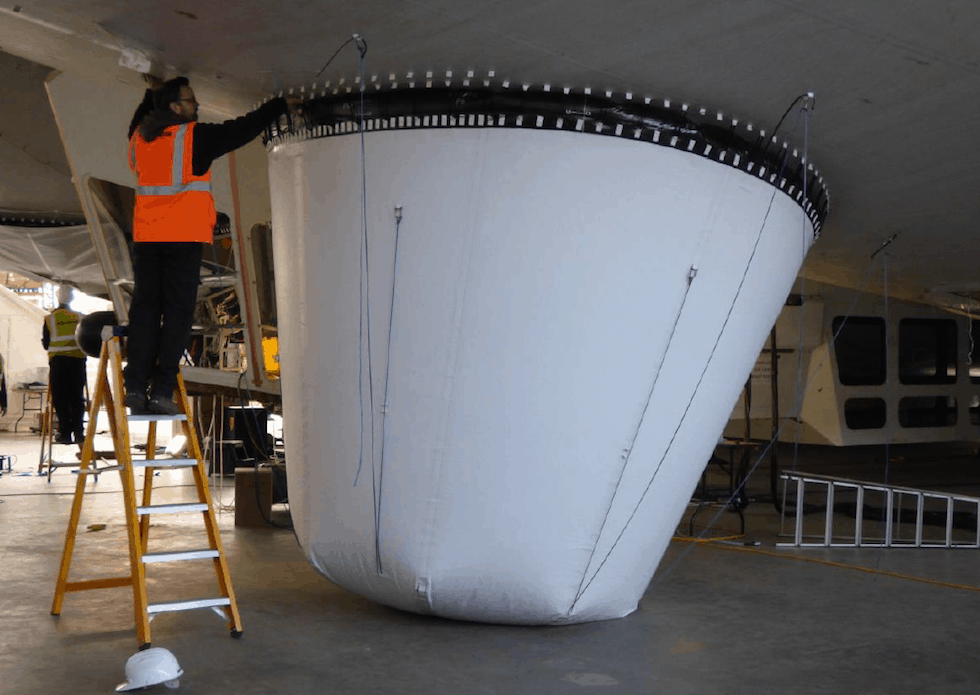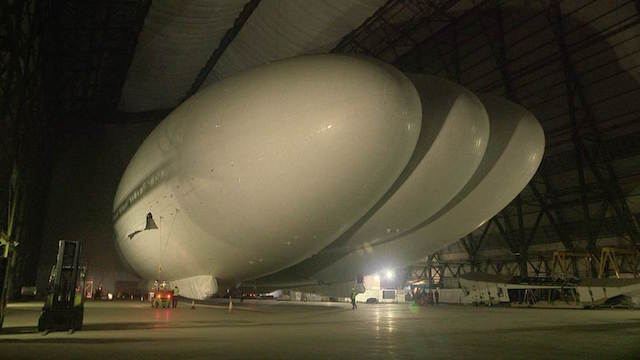
The Auxiliary Landing System (ALS) is one of two modifications made to Airlander 10 following its ‘heavy landing’ at its Cardington-Bedfordshire base in August 2016.
The second modification is a Mobile Mooring Mast (MMM) and both are the result of lessons learned following last year’s airborne anomaly.
Hybrid Air Vehicles, the company behind Airlander 10, announced the enhancements ahead of the aircraft’s imminent hangar exit in April 2017 and resumption of flight tests.
ALS is made up of two airbags that can be deployed as an extra cushion to land on and extend the range of Airlander’s landing angles. The airbags are over 3m long and contain 15 m³ of gas, which is less than 0.1 per cent of the entire hull volume.

An airbag on each side of the flight deck also offers enhanced protection to the cabin and flight deck. ALS will be deployed on most landings in the flight test programme and will use existing ballonet fans to inflate.
The MMM is an integrated tracked vehicle and mooring mast, which makes it easier to control and "push back" Airlander when being manoeuvred around the airfield.
“Both of these enhancements are great engineering innovations, and show the creativity and ingenuity of the team working on Airlander to great effect. We look forward to using them for real very soon,” said Steve McGlennan, CEO Hybrid Air Vehicles.
Airlander 10 Technical Data
Envelope Volume: 38,000 m³ (1,340,000 ft³)
Overall Dimensions:
Length 92 m (302 ft)
Width 43.5 m (143 ft)
Height 26 m (85 ft)
Endurance: 5 days manned
Altitude: up to 16,000 ft (4,880 m)
Speed:
Cruise 80 Knots (148 km/hr)
Loiter 20 Knots (37 km/hr)
Total Weight: 20,000 kg (44,100 lbs)
Payload capacity: up to 10,000 kg (22,050 lbs)





Poll: Should the UK’s railways be renationalised?
I _do_ remember British Rail - and that it was <i>literally</i> a national joke https://youtu.be/zV2lmSDKvO8